Hager 85346183 Handleiding
Hager
Niet gecategoriseerd
85346183
Bekijk gratis de handleiding van Hager 85346183 (4 pagina’s), behorend tot de categorie Niet gecategoriseerd. Deze gids werd als nuttig beoordeeld door 29 mensen en kreeg gemiddeld 4.8 sterren uit 15 reviews. Heb je een vraag over Hager 85346183 of wil je andere gebruikers van dit product iets vragen? Stel een vraag
Pagina 1/4

KNX radio motion detector comfort
1.1 m quicklink
Order no. 8534 51 ..
KNX radio motion detector comfort
2.2 m quicklink
Order no. 8534 61 ..
Operating and assembly
instructions
Berker GmbH & Co. KG
Zum Gunterstal
66440 Blieskastel, Germany
Tel.: + 49 6842 945 0
Fax: + 49 6842 945 4625
e-mail: info@berker.de
www.berker.com
04/2022
6LE005217D
z
KNX radio motion detector comfort
1.1 m quicklink
KNX radio motion detector comfort
2.2 m quicklink
Safety instructions
Electrical equipment must only be installed
and assembled by a qualied electrician in ac-
cordance with the relevant installation stand-
ards, regulations, directives and safety and ac-
cident prevention directives of the country.
Failure to comply with these instructions may
result in damage to the device, re or other
hazards.
The radio transmission is not suitable for safe-
ty or alarm applications.
Due to its detection behaviour the device is not
suitable for use in burglary detection or alarm
systems.
These instructions are an integral component
of the product and must be retained by the end
user.
Design and layout of the device
(3)
(5)
(6)
(4)
(2) (1)
Fig. 1: Design and layout of the device
(1) Insert
(see "Accessories", not in scope of delivery)
(2) Frame (not included)
(3) Application module
(4) Motion detector design cover
(5) Module retaining screw
(not for Berker R.1/R.3/R.8)
(6) Interface between insert/application module
Function
System information
This device is a product of the quicklink system, in
which installation devices communicate via radio
signals.
quicklink stands for a configuration mode, in which
the function-related connection between trans-
mitters and receivers is set on the device through
buttons and displays without further tools.
All devices configurable by quicklink can be oper-
ated together in one system.
► See configuration instructions.
This device complies with EU Directive 2014/53/EU.
The declaration of conformity and further system
information can be accessed at hager.com.
The device may be operated in all EU and EFTA
states (excluding Switzerland and Liechtenstein).
Correct use
- Automatic switching of lighting depending on
heat motion and ambient brightness
- Application module for switch insert, dimmer
insert or power supply for KNX radio applica-
tion module
- The device has been designed for smaller ap-
plications, in which a maximum of 20 devices
are allocated
- Only suitable for use in indoor areas with no
drip and no spray of water
Product characteristics
- quicklink functions to extend the detection ar-
ea, scenes, control circuits
► See conguration instructions
- Remote control via quicklink transmitter
- Integrated button for selecting operating modes
and special functions
- Lockable integrated button
- The operating modes Automatic, Permanent
ON, Permanent OFF can be selected
- Display operating mode via LED
- Potentiometer for setting the response bright-
ness and detection sensitivity
- Adjustable detection angle for adapting the
detection area
- Additional adjustment of the response bright-
ness via Teach-In function
- Party function
- Presence simulation
- Optional extension unit operation via installa-
tion button
Automatic mode
The motion detector detects heat motion caused
by people, animals, or objects.
On switch insert and dimmer insert with factory
setting:
- The light will be switched on for a xed delay
time of 3 minutes if movements are detected in
the detection area and the set brightness
threshold is undershot. Each additional move-
ment in the detection area restarts the delay
time.
- The light will be switched o after 3 minutes if
no additional movements are detected.
On dimmer insert configured with time function
(see configuration instructions):
- The light will be switched on for the delay time,
if movements are detected in the detection ar-
ea and the set brightness threshold is under-
shot. Each additional movement in the detec-
tion area restarts the delay time.
- After the delay time elapses, the lighting will be
dimmed to 50% of the switch-on brightness
level and will remain at this brightness level for
30 s (switch-o pre-warning). Any motion de-
tected during the switch-o pre-warning re-
starts the delay time and restores the switch-on
brightness level.
- The light will be switched o if no motion is
detected any longer in the detection area and
the set delay time and the switch-o pre-warn-
ing have elapsed.
Performance after mains breakdown/return of
mains supply
- Mains breakdown shorter than 0.2 s:
The function is not impaired.
- Mains breakdown longer than 0.2 s:
There is no function during the mains break-
down. The current conguration is saved in
non-volatile memory.
- Return of mains supply:
The application module executes an initialisa-
tion for approx. 5 s, during which the lighting
will be switched on. Motion detection starts
thereafter. If no motion is detected during the
rst 5 s, the lighting is switched o. The saved
conguration is loaded from memory. During
this period, local operation via the button or
extension unit can be used.
Operation
Operating concept
(8)
(7)
Fig. 2: Display and operating elements
(7) Button
(8) Status LED
Operation is executed by pushing the button (7)
on the motion detector:
- A short press of the button switches the operat-
ing modes. The operating mode is displayed
via the status LED behind the optics cover of
the motion detector.
- Keeping the button pressed activates special
functions. Selection of the special functions is
supported by the LED display (Fig. 3).
Selecting the operating mode
Briefly press the button repeatedly until the
desired operating mode is selected.
The status LED indicates the selected operat-
ing mode (see Table 1).
Switching the operating mode nishes the party
function or presence simulation, if these func-
tions were previously active.
Disabling/enabling operating mode selection
via button
Keep the button pressed for more than 15
seconds, until the status LED is flashing green
(Fig. 3).
Selection of the operating mode via the button
is disabled.
or if the button is locked:
Keep the button pressed for more than 15
seconds, until the status LED is flashing green
(Fig. 3).
The operating mode can be selected via the
button again.
Switching on the lighting via push-button ex-
tension unit or changing the switch-on bright-
ness level
Optionally, the lighting can be switched on via a
mechanical push-button extension unit (Table 2).
For extension unit operation, the lighting is
switched on independently of the set bright-
ness threshold.
When using the dimmer inserts, the last set
brightness level will be saved as the switch-on
brightness level.
Activating/interrupting party function
The party function switches the lighting on for 2
hours. During this time, no extension unit or radio
commands are executed.
Keep the button pressed for more than 5 sec-
onds, until the status LED flashes red (Fig. 3).
The lighting is switched on for 2 hours. During
this time the status LED is flashing red. When
the 2 hours have elapsed, the motion detector
switches to the operating mode.Auto
Briefly press the button.
The party function is interrupted and the motion
detector reverts to the operating mode.Auto
Activating/deactivating the presence simula-
tion
During operation, the motion detector counts the
motion detections in one full hour and saves the
result. With active presence simulation at the
beginning of the hour with the most detections
saved, the light will be switched on for the duration
of the delay time, even no motion is detected.
During the presence simulation, presence de-
tection, extension unit and radio commands will
continue to be executed normally.
Keep the button pressed for more than 20
seconds, until the status LED slowly flashes
red (Figure 3).
The presence simulation is active. During this
time the status LED lights orange. The motion
detector switches the lighting on at the saved
time.
Briefly press the button.
The presence simulation will be deactivated,
the motion detector reverts to the operat-Auto
ing mode.
Settings
Setting response brightness via Teach-In
function
The response brightness is the brightness value
saved in the motion detector; when this value
is undershot the motion detector switches the
connected load if movements are detected. Via
Teach-In function the current ambient bright-
ness is saved as the response brightness.
The load is switched off.
Keep the button pressed for more than 10
seconds, until the status LED flashes orange
(Fig. 3).
The motion detector detects the current
ambient brightness and saves it as response
brightness.
Setting of the response brightness via
Teach-In function and via the brightness po-
tentiometer has the same priority. Teach-In
overwrites the response brightness set on
the brightness potentiometer. If the setting is
made again via the potentiometer , the
Teach-In gure will be overwritten.
Setting the load
If the switching performance is not satisfactory
after commissioning when using the motion de-
tector on universal switch inserts and universal
touch dimmers, a load setting must be carried
out.
A load setting is required each time the load
is changed.
Switch off load.
Keep the button pressed for more than
25 seconds, until the status LED is slowly
flashing orange.
Release push-button.
The connected load flashes once. The
device is in selection mode.
If no further actions are performed within the
next 10 seconds, the dimmer switches to
normal operation.
Briefly press the bottom button repeatedly to
activate the desired setting mode.
► See Table 3a / 3b
Information for electricians:
For the version labelling of the ush-mount-
ed insert, see packaging label or sticker on
the back of the housing.
Function
Party function
Teach-In
Keylock
Presence
simulation
Load setting
mode1)
LED display
Hold time
operation
button
> 5 s >10 s > 15 s > 20 s > 25 s
1) Only on universal switch insert and universal dimmer insert
Fig. 3: Selection of special functions and LED display
LED display
Operating mode
Description
--
Auto
Motion and brightness-dependent switching on/switching o
of the load
Green
Permanent ON
Load is permanently switched-on/switched-o.
Extension unit signals, as well as radio signals, will not be
evaluated
Red
Permanent OFF
Table 1: Display of operating modes
Dimming status
Operation
button
Performance of the insert
Motion detector applied on switch insert
OFF
Short press
Load is switched on for the set delay time
ON
Short press
Extension of switch-on time by the set delay time
Motion detector applied on push-button dimmer comfort 1gang
OFF
Short press
Load is switched on to the switch-on brightness level for the set
delay time
ON
Short press
Extension of switch-on time by the set delay time at the same
brightness
OFF
Long press
Load is switched on to switch-on brightness-level, subsequent
dimming in the opposite direction of the last dimming process.
Thereafter the load remains switched on for the delay time
ON
Long press
Changes the current brightness. Dimming takes place in the op-
posite direction of the last dimming operation until maximum or
minimum brightness. Subsequently the load remains switched
on at the set brightness for the set delay time.
Table 2: Operation via push-button extension unit


Setting the load on a universal switch or dimmer insert from Version R1.2
Briefly
press
the
button
Setting mode
Duration and confirmation of the
load setting
The light to conrm the load ashes at
50% brightness.
Information for use
1 x Load
factory setting
Settings duration: approx. 30 sec.
Load switching/dimming phases may
occur during the automatic settings
process.
The load ashes one last time as a con-
rmation and then goes out. The device
returns to normal operation.
Factory setting with automatic
load recognition.
If the switching behaviour is
unsatisfactory after that, restart
selection mode and select the
best option.
2 x
LED mode 1
(phase cut-on)
After approx. 5 sec., the load ashes
twice as a conrmation and then goes
out. The device returns to normal oper-
ation.
Recommended for lower 230 V
LED loads up to max. 60 W if the
switching/dimming behaviour is
unsatisfactory after automatic
load setting.
3 x
LED mode 2
(phase cut-on)
Settings duration: ≤ 50 sec.
Load switching/dimming phases may
occur during the automatic settings
process.
Finally, the load ashes three times as
a conrmation and then goes out. The
device returns to normal operation.
Recommended for higher 230 V
LED loads from 50 W, which can
be operated in the phase cut-on.
Observe manufacturer's data!
4 x
Fine setting of
minimum bright-
ness
5 predened minimum brightness levels
for 2.5 sec. each, run through repeatedly
(3 runs).
As soon as the connected load
shows a satisfactory minimum bright-
ness, confirm by quickly pressing the
bottom button.
After approx. 5 sec., the load ashes
four times as a conrmation and remains
switched on (50% brightness). The de-
vice returns to normal operation.
To optimise the switch-on behav-
iour, or if the load ickers in the
lower dimming range, the mini-
mum brightness setting can be
manually adjusted here.
Table 3a
Setting the load on a universal switch or dimmer insert up to Version R1.1
Briefly
press
the
button
Setting mode
Confirmation of the
load setting
Information for use
1 x Load
ne-setting
Load ashes 1 x after approx. 30 s and
changes to normal operation
Not suitable for ohmic loads
(e.g. incandescent, HV halogen
lamps); use factory load setting.
If the load ne-setting does not
bring any improvement for ener-
gy-saving lamps or 230 V LED
lamps, select the energy-saving
lamp ne-setting or 230 V LED
lamp universal setting.
2 x
Load
factory setting
Load ashes 2 x after approx. 6 s and
changes to normal operation
3 x
Energy-saving
lamp ne-setting
in phase cut-on
Load ashes 3 x after approx. 30 s and
changes to normal operation
Energy-saving lamps are
switched on at a brightness level
of at least 50% in order to ensure
an ignition process.
4 x
230 V LED lamps
Universal setting
in phase cut-on or
phase cut-o
Load ashes 4 x after approx. 5 s and
changes to normal operation
For connected dimmable 230 V
LED lamps the dimming principle
and the optimal switch-on bright-
ness level is set automatically.
For all setting
modes
Load ashes 5 x
The selected setting mode is not
supported by the insert.
Table 3b
Information for electricians
Installation and electrical connection
Selecting installation location
A minimum distance between the transmitter and
corresponding receiver of about 1 m must be
maintained.
A minimum distance to electronic devices which
emit high frequency signals such as computers,
electronic transformers or microwave devices of
approx. 0.5 m must be maintained.
Material
Degree of material
penetration
Wood, plaster, plaster-
board, uncoated glass
approx. 90 %
Brick, press boards
approx. 70 %
Reinforced concrete,
underoor heating
approx. 30 %
Metal, metal grids,
aluminium laminates,
coated glass
approx. 10 %
Rain, snow
approx. 1 ... 40 %
Table 4: Material penetration
Mounting on or close to metal surfaces may cause
impairment of the radio transmission.
Take material penetration into account. The range
of the system can be optimised by selecting the
best possible mounting location:
Observe the motion orientation: A distinction is
made between "direct approach" and "trans-
verse motion". Motions transverse to the mo-
tion detector can be detected better than mo-
tions toward the motion detector (Figure 4).
Select an installation location that is free of
vibration. Vibrations can cause undesired
switching.
Avoid sources of interference in the detection
area (Fig. 6 and 7). Sources of interference,
e.g. heating elements, ventilation systems, air
conditioners and lamps that are cooling down
can cause undesired switching (Fig. 4).
To avoid disturbing inuences, the detection
angle can be restricted (see Restriction of the
detection area).
Assembly of the device (Figure 1)
Information on electrical connection are to be
taken from the operating instructions of the in-
sert.
Attach the application module (3) together with
frame (2) to a suitable insert (1) and establish a
connection between insert and the application
module via the plug-in interface (6).
As soon as voltage is supplied to the appli-
cation module, the status LED indicates the
compatibility with the insert used.
Status LED
display
Meaning
LED ashes green
(approx. 5 s until
motion detection is
active)
Compatible
LED ashes red
for 5 s
Not compatible.
LED ashes orange
for 5 s
Compatible, but not
congured to each
other. For a new cong-
uration, the application
module must be reset
to the factory setting.
If available, fix dismantling protection with
screw (5).
After radio configuration (see configuration in-
structions) and commissioning, snap the design
cover (4) onto the application module (3).
Commissioning
Overview of operation and adjustment ele-
ments
T
150
90°
...
45° 5°
...
90°
fct
cfg
(9) (9)
(10)
(11)
(12)
(13)
(13)
(14)
Fig. 5: Operating and adjustment elements of the
bottom part of the application module
(9) Potentiometer for sensitivity
(10) buttonfct
(11) Detection angle adjuster
(12) LEDStatus/fct
(13) button/LEDcfg
(14) Potentiometer for response brightness
Setting the detection area
The detection angle can be restricted for the right
side and for the left side via each adjuster (Fig. 5,
10) between 45° and 90° for each adjuster. This
can be carried out on the device.
The detection angle can therefore be between 90°
and 180° (Fig. 8).
Use the adjusters to set the detection angle for
each side.
Setting the detection performance
Test mode must be used to test the detection
performance. In test mode, the motion detector
works independent of brightness. Each detection
switches the lighting and the status LED on for 3
seconds. The motion detection will then be deacti-
vated for 2 seconds.
The motion detector is connected and ready for
operation.
Setting the test mode. To do this, set the
response brightness potentiometer (Fig. 5, 13)
to the position.T
Leave the detection area and observe the
switching behaviour.
If the motion detector switches on without
motion in the detection field, then sources of
interference (see Mounting location) are pres-
ent or the sensitivity is set too high.
Reduce the sensitivity if necessary and blank
out sources of interference by adjusting the
detection angle or removing them.
Check the detection area using a detection test
and adjust if necessary.
If the detection area is too small, it can be ex-
tended via motion detector extension units or
per radio via a master-slave conguration.
► See conguration instructions.
Setting the response brightness
The response brightness is the brightness value
saved in the motion detector; when this value
is undershot the motion detector switches the
connected load if movements are detected. The
response brightness can be set between approx.
5 ( ) through (factory setting) to daytime 150 Lux
operation ( symbol stands for inde-). The
pendent of brightness switching. The response
brightness can be variably adjusted in the interme-
diate areas.
In order to control the lighting in stairwells in
accordance with DIN EN 12464-1, 2003-3,
select the 150 Lux potentiometer setting.
Turn the response brightness potentiometer
(Fig. 5, 14) to the desired position.
To save the current ambient brightness as re-
sponse brightness, use the Teach-In function
(see Setting the response brightness via
Teach-In function).
Setting the sensitivity
Detection is factory-set to maximum sensitivity. If
there are frequent incorrect detections, the sensi-
tivity can be reduced.
Turn the sensitivity potentiometer (Fig. 5, 9) to
the desired position.
1,10 m
180°
çç
2,2 m
Fig. 4: Installation location of the motion detectors
10°
2 0
[m]
[m]
1.1
1.75
Detection area at:
"direct approach" "transverse motion"
84048
0
4
8
12
12
180°
4 6 8 12
12
Fig. 6: Detection area of the motion detector for installation height 1.1 m
20
0
0
6 6
10
22
2
44
4
6
8
4 6 8 10
[m]
[m]
2.2
1.75
Detection area at:
"direct approach" "transverse motion"
Fig. 7: Detection area of the motion detector for installation height 2.2 m
T
150
90°
...
45° 45°
...
90°
fct
cfg
T
150
90°
...
45° 45°
...
90°
fct
cfg
T
150
90°
...
45° 45°
...
90°
fct
cfg
90°
...
45° 45°
...
90°
fct
90°
...
45° 45°
...
90°
fct
90°
...
45° 45°
...
90°
fct
~ 180° ~ 135° ~ 90°
Fig. 8: Setting the detection angle
Technical data
Connection Attachment to suitable insert
(see Accessories)
Power supply via insert
Response brightness approx. 5 ... 1000 Lux (∞)
Sensitivity approx. 10 ... 100 %
Detection angle approx. 90 ... 180°
Detection area (1.1 m) approx. 12 x 16 m
Detection area (2.2 m) approx. 8 x 12 m
Transmission frequency 868-870 MHz
Transmission power 25 mW
Radio protocol KNX Radio RF1.M
quicklink logic functions max. 20 transmitters/
receivers
Receiver category 2
Transmitter duty cycle < 0.1 %
Degree of protection IP 20
Relative humidity 0 ... 65 % (no condensation)
Ambient temperature -5 … +45 °C
Storage/transport temperature -20 … +60 °C
Mounting orientation Interface between application
and power module at top
Accessories
Relay insert 8512 12 xx
Universal switch insert 1gang 8512 11 xx
Push-button dimmer 1gang 8542 11 xx
Push-button dimmer comfort 1gang 8542 12 xx
Power supply for KNX radio
application module 8502 01 xx
Warranty
We reserve the right to realise technical and
formal changes to the product in the interest of
technical progress.
Our products are under guarantee within the
scope of the statutory provisions.
If you have a warranty claim, please contact the
point of sale.
Product specificaties
| Merk: | Hager |
| Categorie: | Niet gecategoriseerd |
| Model: | 85346183 |
Heb je hulp nodig?
Als je hulp nodig hebt met Hager 85346183 stel dan hieronder een vraag en andere gebruikers zullen je antwoorden
Handleiding Niet gecategoriseerd Hager
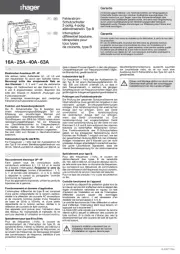
12 Mei 2025
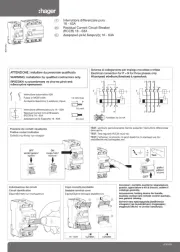
12 Mei 2025

12 Mei 2025
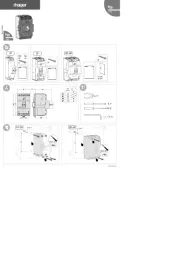
12 Mei 2025
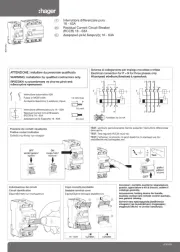
12 Mei 2025
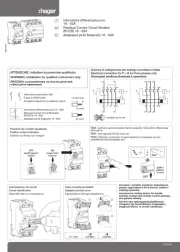
12 Mei 2025
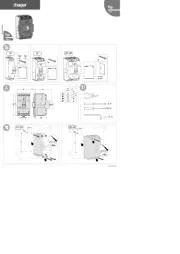
12 Mei 2025
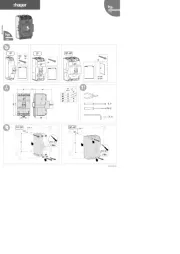
12 Mei 2025
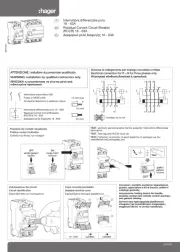
12 Mei 2025
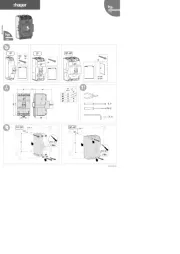
12 Mei 2025
Handleiding Niet gecategoriseerd
- DPM
- Michael Todd Beauty
- Homelite
- Nolte
- Contour
- Thinkware
- Motorola
- Ecler
- Old Blood Noise
- Donexon
- Plunge
- Infantino
- Cadac
- Wooden Camera
- Tanita
Nieuwste handleidingen voor Niet gecategoriseerd

17 September 2025

17 September 2025

17 September 2025

17 September 2025

17 September 2025
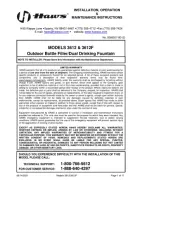
17 September 2025

17 September 2025

17 September 2025
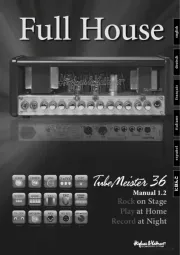
17 September 2025

17 September 2025